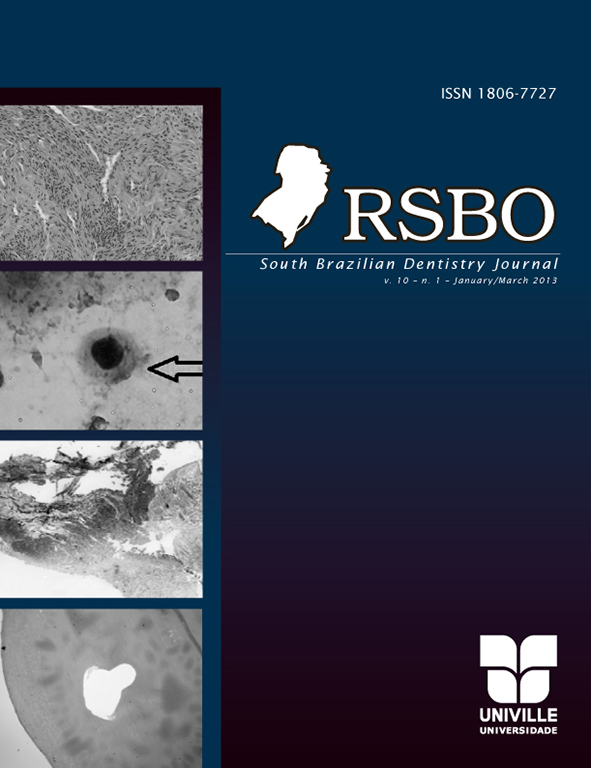Lack of pulp sensitivity in maxillary canines submitted to orthodontic traction: a retrospective clinical study
DOI:
https://doi.org/10.21726/rsbo.v10i1.891Palavras-chave:
canine tooth; orthodontics; dental pulp necrosis.Resumo
Orthodontic movement may cause a great number of
tissue alterations in the dental pulp. However, these changes may not
be entirely recognized owing to the difficulty in simulating clinical
situations. Objective: The aim of this study was to clinically assess
the incidence of negative pulp sensitivity to cold among maxillary
canines in infraocclusion submitted to orthodontic traction. Material
and methods: Two study groups were selected: an experimental
group, comprising 32 canine teeth with complete root formation
that had been submitted to orthodontic traction, and a control
group, comprising 32 canine teeth with complete root formation that
had never been submitted to any orthodontic movement. Results:
Fourteen teeth from the experimental group showed lack of pulp
sensitivity, whereas only one tooth from the control group showed
negative pulp sensitivity. Fischer’s exact test revealed a significant
difference between the groups (p < 0.05). Conclusion: In conclusion,
the teeth that had been submitted to orthodontic traction were more
likely to lack sensitivity than those that had not been submitted to
the same procedure.

